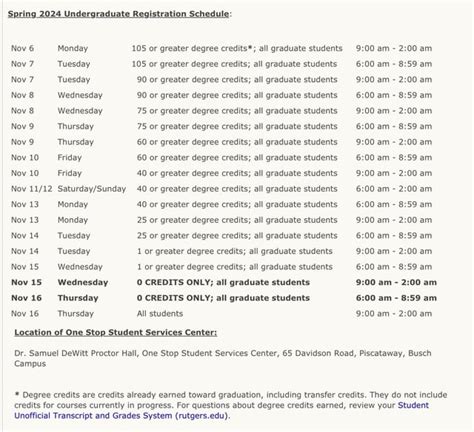The add/drop period at Rutgers University is a crucial time for students to make adjustments to their schedules and ensure they are enrolled in the courses that best meet their academic goals. During this period, students can add and drop courses without penalty, allowing them to explore different options and tailor their schedules to their needs.

Key Dates and Deadlines
The add/drop period for the Fall 2023 semester runs from August 28th to September 9th. It is important to note that these dates may vary slightly for different schools and programs within Rutgers University. Students should consult the official academic calendar for specific details.
Eligibility Requirements
All Rutgers students are eligible to add or drop courses during the add/drop period, with the following exceptions:
- Students on academic probation
- Students with financial holds
- Students who have already exceeded the maximum number of credits allowed in their program
How to Add or Drop Courses
Students can add or drop courses through the following methods:
- Online: Using the WebReg portal (https://webreg.rutgers.edu)
- In-person: Visiting the Registrar’s Office or the Office of Academic Services in their school or college
Adding a Course
To add a course, simply follow these steps:
- Search for the desired course using the course catalog or class search tool.
- Select the desired class from the search results.
- Click the “Add” button.
- Enter the required information, such as the CRN (course reference number) and the credit hours.
- Submit the request.
Dropping a Course
To drop a course, follow these steps:
- Go to the WebReg portal or visit the Office of Academic Services.
- Select the “Drop Course” option.
- Select the course you wish to drop from the list of registered courses.
- Submit the request.
Consequences of Adding or Dropping Courses
It is important to understand the consequences of adding or dropping courses, as these actions may impact financial aid, academic progress, and graduation timelines.
Financial Aid Considerations
- Adding a course may affect your financial aid award if it increases your credit load beyond the amount for which you are eligible.
- Dropping a course may result in a reduction of your financial aid if it reduces your credit load below the minimum required for your award.
Academic Progress
- Adding a course can increase your workload and may impact your ability to succeed in your other courses.
- Dropping a course can delay your progress towards graduation if it is a required course for your program.
Graduation Timeline
- Adding a course may extend your graduation timeline if it delays the completion of required coursework.
- Dropping a course may also extend your graduation timeline if it is a prerequisite for subsequent courses.
Tips and Tricks
- Plan ahead: Before the add/drop period begins, take some time to explore different course options and create a tentative schedule. This will help you make informed decisions during the add/drop period.
- Research courses: Use the course catalog and class search tool to learn more about the courses you are considering. Read course descriptions, check prerequisites, and consider the instructor’s reputation.
- Consult with your advisor: If you are unsure about which courses to add or drop, consult with your academic advisor for guidance. They can provide valuable insights and help you make the best choices for your academic goals.
- Monitor your progress: After making changes to your schedule, be sure to monitor your registration status through WebReg or the Office of Academic Services. This will ensure that your changes have been processed correctly and avoid any potential issues.
Conclusion
The add/drop period at Rutgers University is a critical opportunity for students to adjust their schedules and tailor their academic experience. By carefully considering the key dates, eligibility requirements, and potential consequences of adding or dropping courses, students can make informed decisions that align with their academic goals and aspirations.
